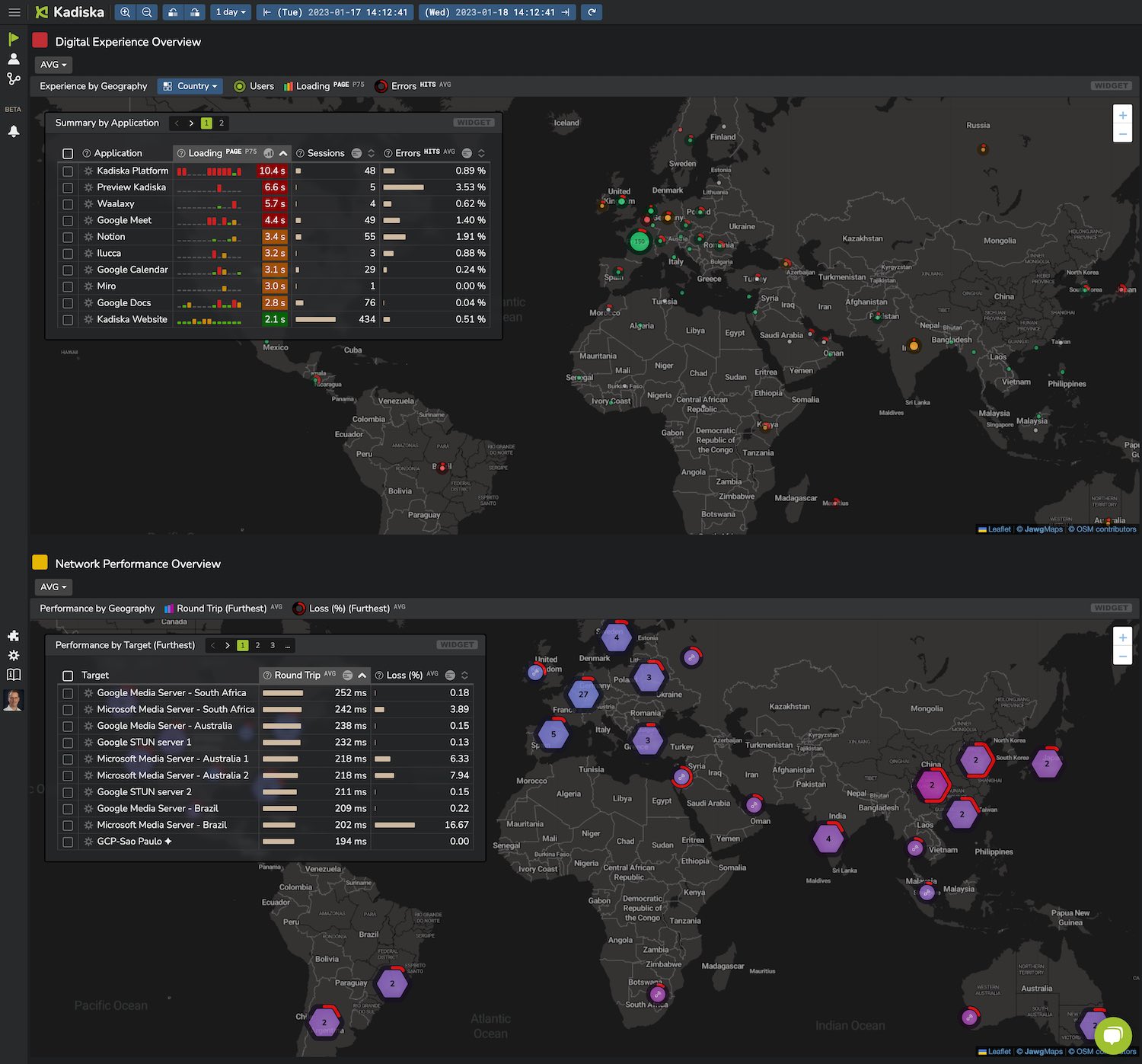Digital Experience Monitoring (DEM) is a digital performance monitoring technique that provides visibility into digital experiences from the user’s perspective. It enables organisations to proactively manage digital experiences by monitoring all infrastructure dependencies and interdependencies, such as Wi-Fi, Internet, network, browser, and SaaS application performance. This type of visibility is necessary in order to understand how users interact with digital systems and applications in real time and how to proactively optimise performance and rapidly resolve digital experience issues.
Why is DEM needed?
Organizations rely heavily on digital services, applications, and systems to successfully run their businesses. Digital experience monitoring is a crucial tool for businesses to proactively identify and address emerging digital performance issues. Without it, your business could be left in the dark about underlying problems that can cost you time and money. Additionally, digital experience monitoring helps organisations improve digital performance by enabling IT teams to quickly identify and address any potential issues before they become an issue for users.
Digital Experience Monitoring Gaps
DEM helps organisations identify digital performance gaps that can affect the digital customer and employee experience. Without digital experience monitoring, digital performance gaps can go unnoticed or unresolved for a long period of time, resulting in user frustration and a potential loss of business. For example, digital experience monitoring can alert IT teams to digital performance issues related to page load times, browser compatibility, or application response times. Digital Experience Monitoring (DEM) is an advanced digital performance monitoring technology that enables organisations to monitor digital experiences from a user’s perspective, as well as from the underlying technology and infrastructure.
DEM is a New IT Essential
According to Gartner, user experience monitoring (DEM) will be utilized by at least 60% of IT leaders in 2026 to gauge the performance of web-based applications, cloud services, and endpoints from the user’s point of view. This was a remarkable shift when compared with 2021, which saw less than 20% adoption!
How Does DEM Work?
With DEM, digital performance data is obtained from digital assets and systems, such as browsers, client-side applications, cloud services, networks, digital devices, and other digital infrastructure. The collected information is then sent to a digital analytics platform for analysis. Through this analysis, businesses can pinpoint issues with the digital experience before they adversely affect users or operations.
With DEM solutions in place, digital teams can identify digital performance issues, determine the root cause of digital experience problems, and take proactive measures to prevent digital experience disruptions. This helps organisations reduce digital service downtime, improve digital performance for their customers and employees, and deliver an optimal digital experience.
What’s the Difference Between DEM, APM, and NPM?
Digital Experience Monitoring (DEM) is different from Application Performance Monitoring (APM), Real User Monitoring (RUM), and Network Performance Monitoring (NPM). DEM looks at digital experiences from users’ points of view, not just the technology and digital systems. It collects data to help identify issues with the digital experience before they cause problems. APM measures how well applications are working, RUM looks at how people are using the applications, and NPM checks how networks are running. DEM combines these insights to provide a holistic view of digital performance.

DEM tools combine network, SaaS application and real user monitoring perspectives to detect and diagnose digital experience issues in real time, and to monitor them across all users and locations
By combining these multiple points of view, Digital Experience Monitoring is a powerful digital performance monitoring technology that provides digital teams with better insights into user experiences, helps them identify digital experience issues early, and takes proactive measures to ensure optimal digital experiences for customers and employees. It is an essential tool for digital teams to ensure digital performance and uptime.
Digital Experience Monitoring (DEM) vs. Digital Employee Experience (DEX) Solutions
Digital Experience Monitoring (DEM) and Digital Employee Experience (DEX) are both digital performance monitoring technologies; however, they have some key differences. Firstly, DEM collects digital performance data from digital assets and systems to provide a holistic view of digital performance, while DEX focuses on the employee digital experience by collecting employee sentiment and incorporating organisational data to inform digital performance. Secondly, DEX is more reactive in nature as it relies on historic data and indicators to resolve digital experience issues, while DEM is proactive in nature as it enables digital teams to take preventive actions that can help improve digital performance for employees and customers.
Why DEM is Essential in a Modern IT World
Overall digital experience monitoring (DEM) provides digital teams with the tools they need to monitor digital performance, detect digital experience issues, and take preventive actions to improve digital experience quality. This helps organisations deliver an optimal digital experience for their customers and employees, as well as reduce digital service downtime.
In conclusion, DEM is a powerful digital monitoring tool that provides unprecedented visibility into digital experiences and digital performance. It is the perfect complement to NPM, APM, DEX, and other digital performance monitoring solutions, allowing digital teams to proactively manage digital experiences while providing additional insights into digital performance.
By leveraging DEM, organisations can maximise the quality of the digital experience and ensure their customers, employees, and partners have a seamless digital experience.
Kadiska and DEM
Our Digital Experience Monitoring (DEM) platform provides complete visibility into real user experience, network performance, and application performance across hybrid cloud, SaaS, and PaaS hosting platforms. Enterprise IT teams use it to proactively detect, isolate, and fix digital experience, network, and application performance issues with this 360° view across all layers and domains. The Kadiska digital experience platform provides visibility to internet-based SD WAN, CDNs, and SASE/CASB-secured networks connecting work from anywhere users with cloud native and SaaS applications deployed across distributed, dynamic cloud platforms.








